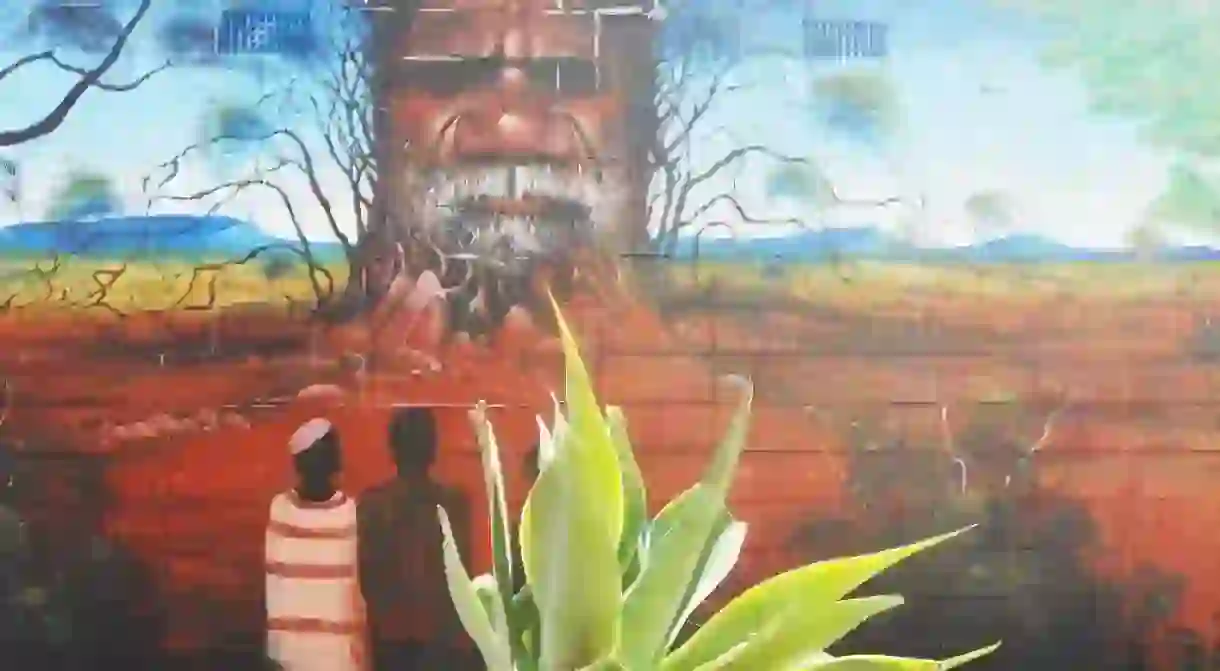The Dreaming: Australia's Era of Gods and Heroes

The English name ‘Dreaming’ doesn’t come close to doing justice to the profound epistemology of Australia’s First Peoples. Dating back at least 50,000-60,000 years, Indigenous Australians maintain the oldest living culture on earth. This ancient continent was home to around 600 Aboriginal nations defined by about 250 different languages before the British colonised the territory in the late 18th century. That rich cultural diversity means it’s impossible to pigeonhole Indigenous communities’ incredibly complex beliefs into one article, but here’s an introduction to the Dreaming, Aboriginal Australians’ religious-cultural worldview.
Definition of ‘the Dreaming’
English dictionaries don’t contain the terminology needed to adequately articulate the concept of the Dreaming, but anthropologist WEH Stanner had a crack in his 1956 essay titled ‘The Dreaming’. He described the worldview as the “everywhen”, a holistic philosophy that encompasses the past, present and future.
Also called the Dreamtime (a slightly anachronistic term), the Dreaming has nothing to do with sleep at all. It refers to an era before living memory, when ancestor beings, creator spirits and supernatural beings roamed the earth. The belief system covers both these creation narratives and the laws that define social and moral order.
The Dreaming continues to exist today in the places and creatures all around us. This cultural knowledge is passed on through the generations via song, dance, art, objects and storytelling that all help maintain strong links to Indigenous communities’ millennia-old heritage and ancient, vibrant culture.

Ancestor spirits
The Dreaming begins with the ancestor spirits coming to the once-barren earth and shaping the natural environment — everything from animals to waterways to rock formations — through their actions. Dreaming stories tell the tales of these ancient beings whose existence ignited the creation process, right down to each tree, cave and hill — every feature of the earth represents one of these epic spiritual journeys.
When those ancestors died, they didn’t pass on to heaven — they live on in the landscape they helped form, which is why the natural environment is so sacred to Indigenous Australians. This belief system explains Aboriginal culture’s intimate relationship to country, which provides an eternal link between the past, present and future. The legendary ancestors of various groups are handed down to future generations through revered animal totems.

Stories
Dreaming stories about these ancestral spirits are picked up gradually throughout an individual’s lifetime, specifically at coming-of-age ceremonies that help pass down that vibrant heritage. Indigenous communities carry on their millennia-old heritage through ritual practices — art, song, dance and other observances — that vary depending on the specific clan.
Each Aboriginal group retains its own understanding of the ‘songlines’ that criss-cross their territory. These Dreaming tracks follow the legendary routes forged by the creator beings during the Dreaming, which are recorded in culture (stories, songs and artworks), which is how Indigenous people today know how to navigate those paths and follow in the footsteps of their ancestors.

Signifcant stories
The most iconic Dreaming story — and one that all Australian kids learn in school — is that of the Rainbow Serpent, a creature that’s at once the source of all life as well as a destructive force when not properly respected. Interpretations vary by clan, but the narrative generally holds that the snake lived beneath a flat, desolate earth at the beginning of time, and formed the features of the landscape — particularly waterways like lakes, rivers and waterholes — on its journey to the surface. The serpent is a symbol of fertility, the cycle of the seasons and water’s integral role in human life.
The Wandjina are another significant ancestor being — cloud and rain spirits that are depicted in the oldest sacred paintings on the planet. Found in the remote Kimberley region of Western Australia, rock art depicting these rain gods is believed to date back several thousand years. The legend goes that the Wandjina would paint their image — big eyes, no mouth — on a cave wall before entering a waterhole to die, before the art was rejuvenated by subsequent generations.

Almost every animal and feature of the natural environment — everything from ants to whales and mountains to valleys — comes with its own Dreaming story, explaining its origins and continuing significance to Indigenous culture.













